
I spend a lot of time in my garden. My family and friends can attest to the amount of time I spend in it. It’s very relaxing for me. There are times when I wish I can take the garden and bring it indoors. If I could only put up a garden in every corner of my house, I definitely would. I’m sure a lot of garden enthusiasts can totally relate to this sentiment of mine.

I’ve been bringing in some plants inside the house. I love the calming, cooling effect that they bring to any space that I put them in. So imagine how happy I was when I came across this DIY picture frame planter. Luckily, I have several unused picture frames at home and lots of succulents to go with them.
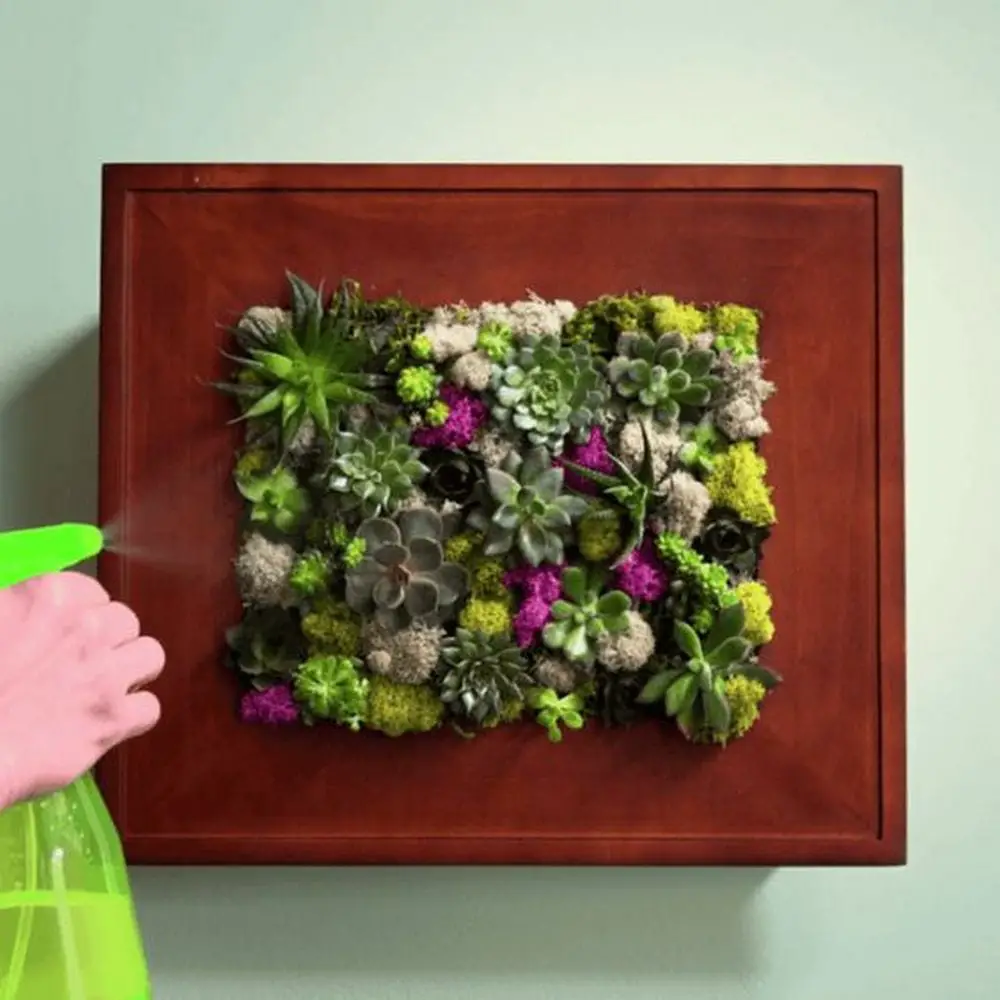
This project is very easy to make. These picture frame planters will make great housewarming gifts so I’m thinking of making lots. If you’re into plants and gardening, you should do this, too!
Contents
Crafting a Picture Frame Planter
Materials
- Picture frame with back and glass panel removed
- Nails
- 1/2-inch hardware cloth
- Staples
- 1/4-inch plywood backing
- Paint
- All-purpose potting soil
- Succulent cuttings
Tools
- Hammer
- Staple gun
- Paint brush
- Clean cloth
- Pencil
- Small pruning snips
Instructions
Step 1: Prepare the Frame
- Start by cleaning your picture frame thoroughly with a clean cloth to remove any dust or debris. If the frame is not already devoid of its back and glass, carefully remove these components.
Step 2: Paint the Frame
- Using your paint brush, apply a coat of paint to the frame. Choose a color that complements your home decor. Allow the paint to dry completely. You may want to apply a second coat for a more opaque finish.
Step 3: Cut and Attach the Hardware Cloth
- Lay out the hardware cloth and measure it to fit the back of your frame. Use a pencil to mark the dimensions.
- With small pruning snips, cut the hardware cloth to your marked size.
- Align the cut hardware cloth to the back of the frame. Using a staple gun, secure the hardware cloth to the frame by stapling it along the edges.
Step 4: Prepare the Plywood Backing
- Measure and cut a piece of 1/4-inch plywood to fit the back of the frame.
- Once cut, attach the plywood to the back of the frame using nails and a hammer. This backing will hold the soil and succulents in place.
Step 5: Paint the Plywood
- Paint the plywood backing if visible, especially if your frame will be placed against a transparent or light surface. Allow the paint to dry.
Step 6: Add Soil and Plants
- Fill the frame with all-purpose potting soil. Be sure to pack the soil lightly to ensure it stays within the frame but provides enough air for plant roots.
- Arrange your succulent cuttings within the soil. Use the small spaces of the hardware cloth to help hold the plants in place.
Step 7: Final Touches
- After planting, gently tap the frame to help the soil settle around the succulents.
- If needed, add more soil gently around the plants, ensuring they are secure and have adequate support.
Step 8: Care and Maintenance
- Place your new picture frame planter in a location that receives ample indirect sunlight.
- Water sparingly, as succulents require minimal moisture. Ensure the soil is dry before watering again.
Click on any image to start the lightbox display. Use your Esc key to close the lightbox.

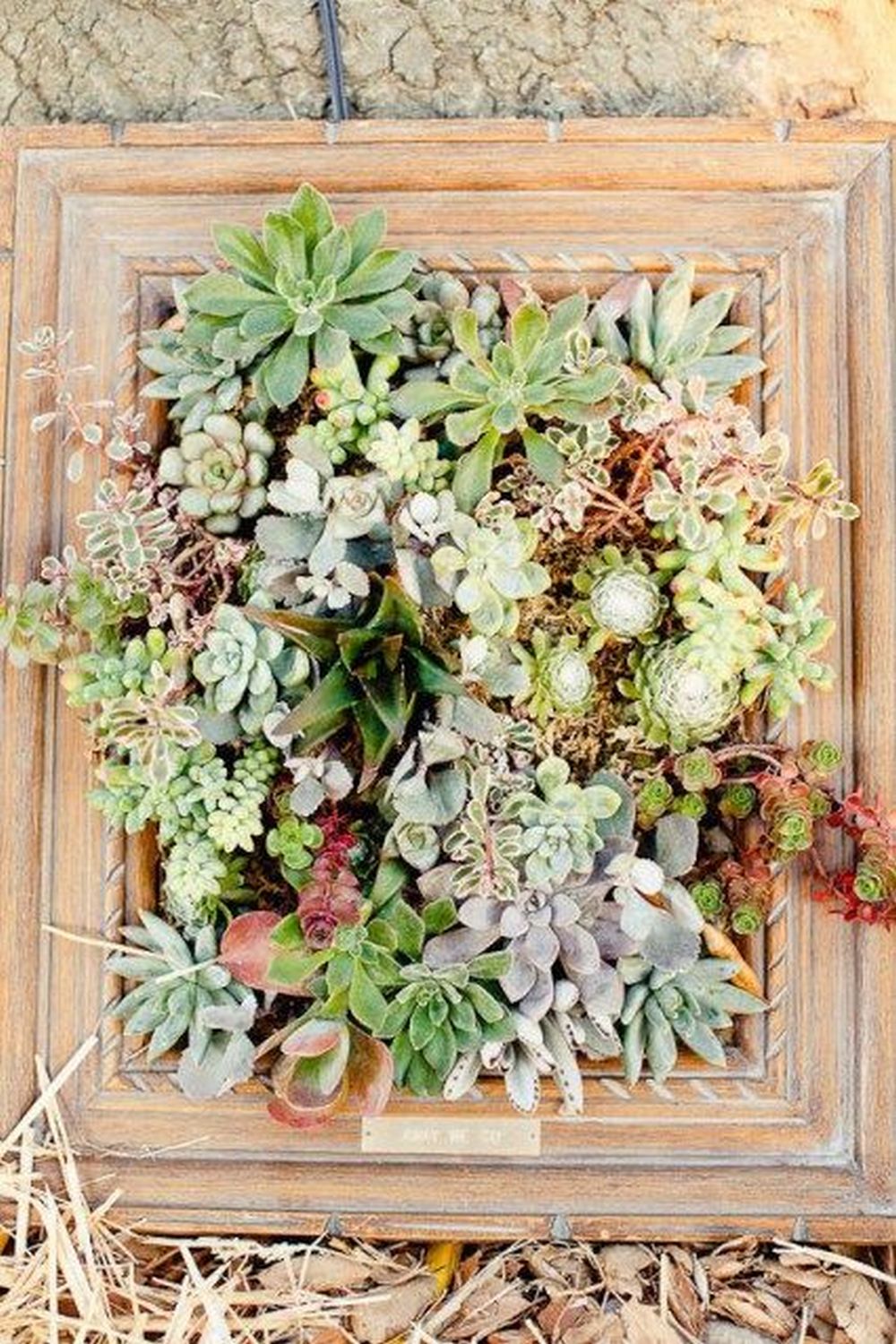


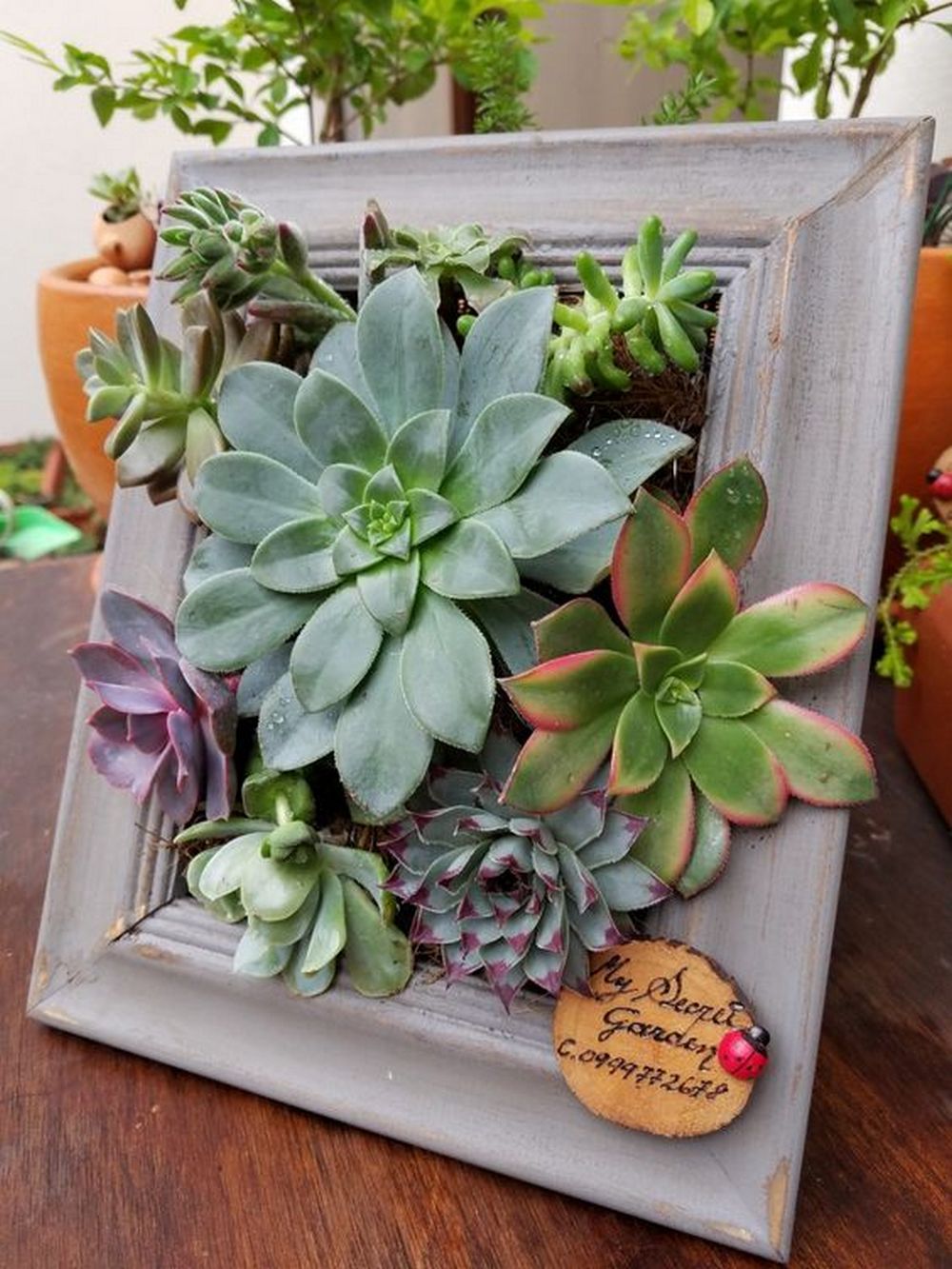
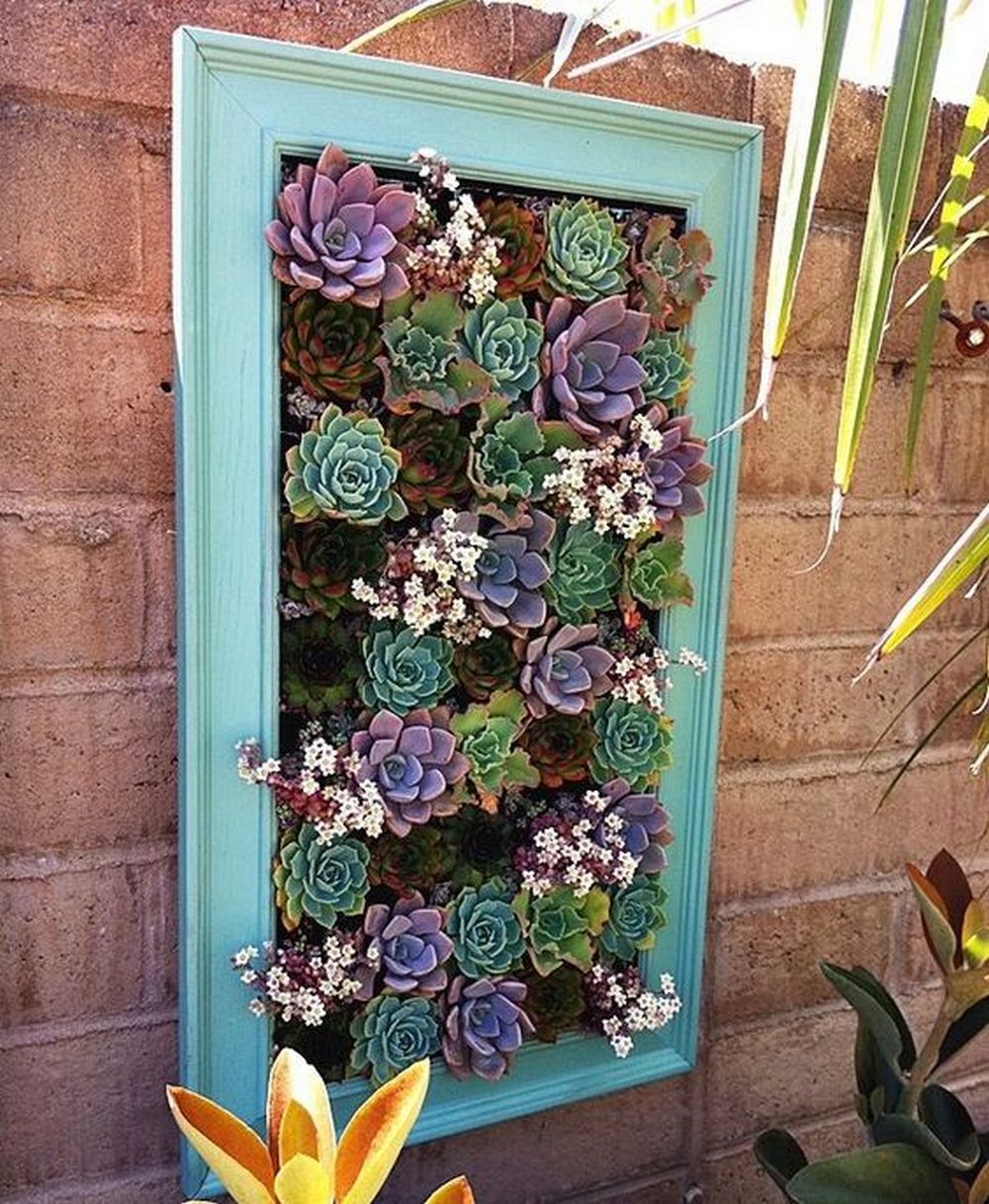
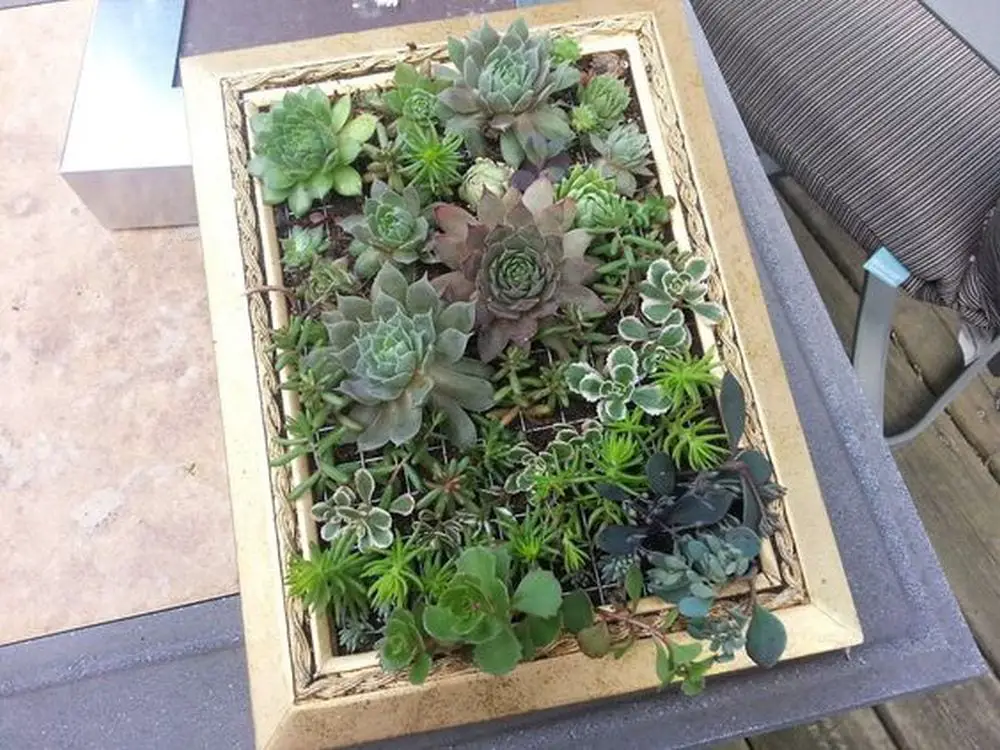


For a visual guide, watch the video below.
Best Plants for Frame Planters
Adding plants to your home decor can significantly enhance its aesthetic, and a picture frame planter offers a unique way to display beautiful greenery. Picture frame planters are perfect for showcasing small, hardy plants that thrive in limited soil and can tolerate the vertical growing conditions.
Here’s a guide to the best plants for your picture frame planter, ensuring both growth success and visual appeal.
Succulents
Succulents are ideal for picture frame planters due to their low maintenance needs and minimal water requirements. Their ability to store water in their leaves makes them well-suited for the shallow soil of a picture frame planter. Popular choices include:
- Echeveria: Known for their rosette-shaped leaves in colors ranging from blue-green to pink.
- Sempervivum (Hens and Chicks): These produce clusters of rosettes; the parent rosette (Hen) spreads through smaller rosettes (Chicks).
- Sedum: Offers various forms and colors, and is very drought-tolerant.
Air Plants (Tillandsia)
Air plants don’t need soil to grow, which makes them a fascinating addition to any picture frame planter. They absorb moisture and nutrients through their leaves and can be simply tucked into the spaces within the frame. They thrive on bright, indirect light and require regular misting.
Mosses
Mosses bring a lush, green look to picture frame planters and work well in shade or partial sunlight. They need consistent moisture to thrive, so they’re suitable for locations that don’t dry out too fast. Moss types like sheet moss and cushion moss create a dense, velvety green layer that complements any frame style.
Small Ferns
Ferns can add a touch of elegance and woodland charm to your picture frame planter. They typically need a bit more moisture than succulents and prefer indirect light, making them ideal for indoor environments. Suitable types include:
- Maidenhair Fern: Recognizable by its delicate, fan-shaped leaves on wiry stems.
- Bird’s Nest Fern: Features ripple-edged fronds that grow out of a central rosette.
Herbs
For a practical and fragrant addition, consider using small herbs in your picture frame planter. Herbs like thyme and oregano do not grow too large and can survive in the limited space of a frame. They require good light and should be harvested regularly to maintain a compact shape.
Each of these plant types brings its own unique beauty to a picture frame planter, transforming your living space into a vibrant, green oasis. Choose plants that will thrive in the light conditions of your home and match the aesthetic you wish to create.
Choosing the Right Frame
When creating a picture frame planter, selecting the right frame is crucial not just for the aesthetics but also for the functionality of your planter. The frame serves as the foundation of your garden art piece, so it needs to be both visually appealing and structurally sound to support the plants.
Here’s how to choose the best picture frame for your planter project.
Consider Frame Material
The material of the picture frame is a critical factor because it affects both the durability and the maintenance requirements of your planter.
- Wood Frames: These are popular for picture frame planters due to their natural look and sturdiness. Ensure the wood is treated or sealed to prevent moisture damage.
- Metal Frames: Metal frames offer a sleek, modern look and are resistant to moisture, making them suitable for humid environments.
- Plastic Frames: Lightweight and often more affordable, plastic frames are easier to hang and move around. However, they may not support heavier soil and plant loads as well as wood or metal frames.
Size and Depth
The size and depth of the frame will dictate how much soil you can add and what types of plants it can support.
- Small Frames: Ideal for smaller succulents or air plants, these can fit into tight spaces and are easier to mount on walls.
- Larger Frames: Provide more room for soil and root growth, making them suitable for a wider variety of plants, including small ferns and herbs.
- Depth Considerations: Ideally, a frame should be at least 2-3 inches deep to accommodate sufficient soil for plant health, although shallower frames can be used for mosses and air plants.
Style and Design
The style of the frame should complement the decor of the space where the picture frame planter will be displayed.
- Ornate Frames: Add a touch of elegance and are perfect for classical or vintage-style interiors.
- Simple Frames: Work well in modern or minimalist decor schemes and focus attention on the beauty of the plants.
Condition and Adaptability
Consider the overall condition of the frame and its adaptability to being repurposed as a planter.
- Sturdiness: Check that the frame is solid and intact. It should be capable of holding the additional weight of the soil and plants.
- Adaptability for Modification: Some frames might need additional preparation or treatment, such as removing the glass and backing, drilling drainage holes, or sealing against water damage.
Choosing the right frame for your picture frame planter not only ensures that your plants have a suitable growing environment but also enhances the overall aesthetic of your planting project. Take your time to select a frame that meets all these considerations for the best results.
Conclusion
Creating a picture frame planter is a delightful way to blend art with nature, allowing you to bring a piece of your garden indoors. This project not only adds a unique decorative element to your home but also provides a nurturing space for plants to thrive. Choose the right frame and plants to ensure your picture frame planter becomes a standout feature in your living space.
We have more creative planters for your garden. Check out our DIY paint pallet planter next!






